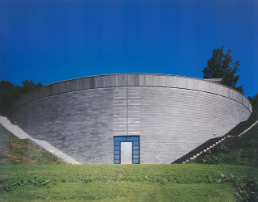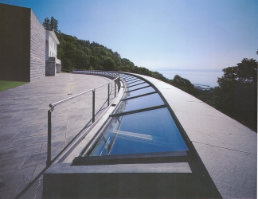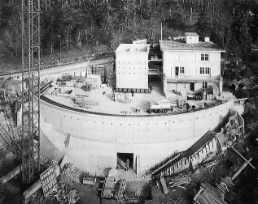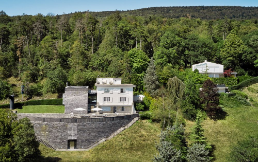
It was on the 14th of December 1990, three weeks short of his seventieth birthday that Friedrich Dürrenmatt passed away in Neuchâtel. He had lived and worked in that city for almost 40 years, in the idyllic setting of the Vallon de l'Ermitage overlooking the town. Dürrenmatt's bequest of his literary holdings to the Swiss Confederation in 1989 gave rise to the Swiss Literary Archives in Berne in 1991. Thereupon Mrs. Charlotte Kerr Dürrenmatt, his second wife, donated Dürrenmatt's former house and garden to the Confederation, under the proviso that these be integrated, based on plans drawn up by Mario Botta, into a future Centre bearing the writer's name. Her initiative thus ensured that her husband's artistic oeuvre - works he unflaggingly created in parallel to his writings - would be assembled and presented in a suitable location. Once the terms of the will were worked out with Charlotte Kerr Dürrenmatt, the Confederation commissioned the internationally renowned architect Mario Botta, one of Dürrenmatt's great admirers, to draw up plans for the future Centre. Botta came up with certain initial ideas already in 1992; construction got underway in May 1998 and was terminated in September 2000.

The Centre Dürrenmatt Neuchâtel (CDN) is a unit of the Swiss National Library. Taking its cue from Dürrenmatt's achievements, the CDN promotes an interdisciplinary approach to the relations between literature and the visual arts. The diversity of its agenda and the scientific support it lends to the Swiss Literary Archives makes the Centre an important bridge between Switzerland's French- and German-speaking regions. As such, it strives to serve as a venue for critical research projects with implications throughout Europe.




